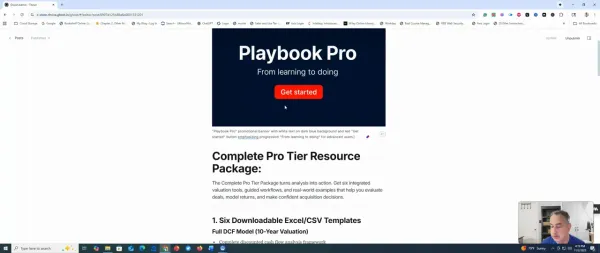Every Dollar Accounted For: How to Track Cash Shortages and Overages in Convenience Stores
Cash shortages quietly drain profits. This guide shows how to tighten tracking, train teams, and fix real causes—not just symptoms. Learn the system that turns cash control from stress into confidence and measurable profit growth.

Cash shortages and overages are silent killers of c-store profitability. The average U.S. convenience store racks up $872 in documented cash register shortages per site, per year, according to recent NACS data. Stores with disciplined tracking, however, routinely recover 30–60% of these losses by tightening controls and retraining staff. Yet many operators still rely on incomplete cash logs, irregular reconciliation, or hope-no-one-notices management that lets preventable shortages persist. Every unchecked error—no matter the intent or effort—leaks value from every shift.
What Cash Shortage/Overage Tracking Really Means
Cash control starts by reconciling each register’s expected cash amount with the actual counted total at shift and day’s end. True control is more than a closing count—it means detailed tracking of all inputs during a shift:
- Starting cash
- Paid-ins (change added, float replenished)
- Paid-outs (lotto payouts, vendor payments)
- Drops (deposits pulled for security)
- Rung sales (from POS)
- Final deposit
Flagging variances outside an acceptable range (typically +/- $2) creates accountability and enables fast investigation. The precision isn’t about being perfect every shift, but about focusing on the process inputs staff can control and document—not just intentions or effort.
Five Core Elements of a Robust Cash Shortage/Overage Tracking System
1. Daily Drawer Reconciliation
At every shift end, tally the expected cash (start + sales – paid outs – drops) and count the drawer. Log both positive and negative variances, and always note:
- Date and time
- Shift
- Cashier or responsible employee
Consistent logging discourages casual errors and creates traceability for patterns over time.
2. Exception Review Alerts
Set automatic alerts or highlight variances above $2, or for any repeat issues in the same week. “It was only a dollar off” easily becomes habit—never let minor shortages fly under the radar.
3. Root-Cause Investigation
Review logs and security footage for unusually large or repeated discrepancies. Interview staff respectfully to distinguish between honest mistakes (incorrect entry, customer confusion, improper change) and more serious issues like theft or process breakdowns.
4. Actionable Feedback Loops
Analyze tracked data. Look for patterns: Is one shift, time of day, or staffer repeatedly short? Do errors spike when the store is busiest? Use findings to retrain, clarify steps, or repair malfunctioning equipment. It’s about fixing the actual broken step—not just giving blanket reprimands.
5. Management Accountability
Owners and managers should review exception reports weekly. Set and publish targets such as “zero uninvestigated variances” or “less than $20 cash shortage per drawer, per week.” Share progress and findings with staff, making clear the connection between careful inputs and a healthier bottom line.
Inputs Over Effort: The Hormozi Approach to Smart Cash Control
Alex Hormozi says: “Money is a byproduct of value delivered, not effort.” In cash management, only by tracking and improving the inputs you control—your processes—do you drive reliable, repeatable profit.
Effort alone—“just work hard at the register”—does not guarantee accountability. Systematic, transparent tracking using daily logs, paid-out slips, and shift reconciliation empowers managers and teams to spot and solve real causes of error. It shifts the culture from blaming individuals to tightening process. Cash accountability, at its core, is not about catching thieves, but about building a surplus by improving every controllable step.
This is the philosophy embedded in The Office Prodigy’s field-tested frameworks: simple, standardized logs, shift checklists, and exception alerts that remove guesswork. They put every cashier and manager in the driver’s seat, measuring exactly what makes or breaks the cash flow, not hoping that luck (or just “trying harder”) will deliver profit.
High-Accountability Systems Deliver More Than Just Money
- Shrink drops: Fast, visible tracking shrinks losses by flagging patterns and causes in real time.
- Corrections speed up: You catch and fix issues now—not after end-of-month reports.
- Training improves: Actual errors—not vague assumptions—inform focused retraining and process fixes.
- Audits go smoother: Your clean, traceable documentation protects good staff and deters fraud.
- Trust grows: Shift feedback focuses on process, not personal blame, unlocking honest discussions and solutions.
Actionable Implementation Roadmap
- Standardize Cash Logs: Use a clear, non-negotiable template for all cash inputs and outputs—available as paper, spreadsheet, or POS add-on.
- Mandate Shift-End Reconciliations: Cashiers and a manager must both sign off on each drawer count; any short/over must be annotated and flagged.
- Enforce Overage/Shortage Tolerances: Set specific thresholds (e.g., +/- $2) for review. Never ignore small errors that show up often.
- Deploy Exception Dashboards: Give managers a weekly digest highlighting outlier shifts or staff so they can investigate, not just tally totals.
- Enable Real-Time Alerts: Modern POS or spreadsheet-based tracking can flag mismatches the moment they occur.
- Train for Input Mastery: Teach your team that accuracy is the result of consistently logging and checking every movement of cash over the shift, not just closing the drawer and hoping the math will work out.
Show that these systems can scale: single-store independents can use logbooks and nightly reviews, while multi-store chains should leverage digital dashboards, multi-site reporting, and regional audit trails.
Conclusion
Convenience store operators who control the tracking inputs for every shift, every dollar, every day, consistently beat shrink, empower honest teams, and turn process discipline into profit. In a time of compressed margins, these systems are the difference-maker—no matter your size.
"Money is the byproduct of accurate, accountable cash handling—not the other way around. Control the inputs you can measure. Everything else follows."
This article is part of the weekly "Profit Power" series from C-Store Thrive.
Found this analysis and these frameworks helpful? Share C-Store Thrive with fellow convenience store owners looking for real-world, results-driven cash controls—not just accounting lectures.





